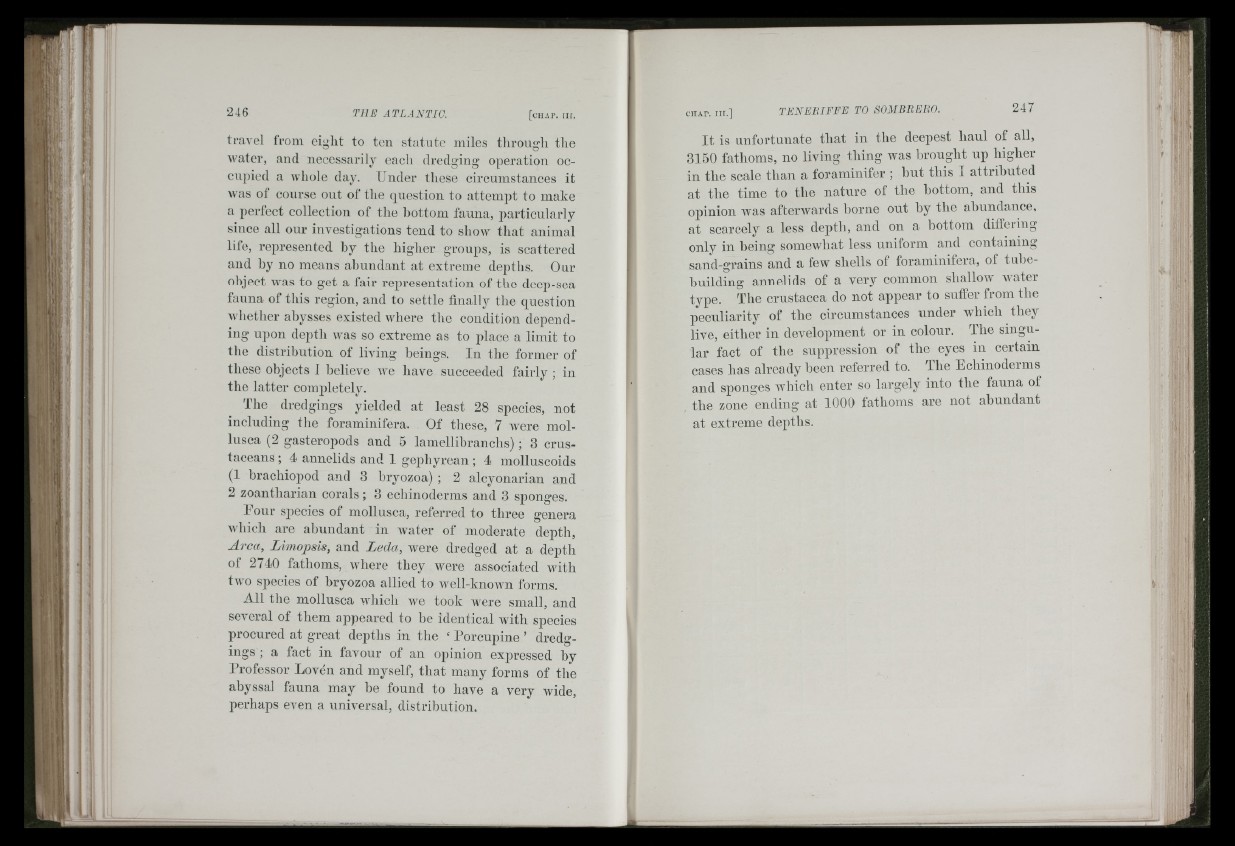
■A
m
I'
travel from eight to ten statute miles through the
Avater, and necessarily each dredging operation occupied
a whole day. Under these circumstances it
Avas of course out of the question to attempt to make
a perlect collection of the hottom fauna, particularly
since all our investigations tend to show that animal
life, represented hy the higher groups, is scattered
and hy no means ahnndant at extreme depths. Our
object Avas to get a fair representation of the deep-sea
fauna of this region, and to settle finally the question
Avhether abysses existed Avliere the condition depending
upon depth Avas so extreme as to place a limit to
the distribution of living beings. In the former of
these objects 1 believe Ave have succeeded fairly ; in
the latter completely.
The dredgings yielded at least 28 species, not
including the foraminifera. Of these, 7 were mollusca
(2 gasteropods and 5 lamellihranchs); 3 crustaceans
; 4 annelids and 1 gepliyrean ; 4 molluscoids
(1 bracliiopod and 3 hryozoa) ; 2 alcyonarian and
2 zoantharian corals; 3 echinoderms and 3 sponges.
Uour species of mollusca, referred to tliree genera
Avliich are abundant in Avater of moderate depth,
At'ca, Limopsis, and Leda, were dredged at a depth
of 2740 fathoms, Avhere they were associated Avith
two species of hryozoa allied to Avell-knoAvn forms.
All the mollusca wliich we took were small, and
scA-eral of them appeared to be identical with species
procured at great depths in the ‘ Porcupine ’ dredgings
; a fact in favour of an opinion expressed by
Professor Loven and myself, that many forms of the
abyssal fauna may be found to have a very Avide,
perhaps even a universal, distribution.
It is unfortunate that in the deepest haul of all,
3150 fathoms, no living thing was brought up higher
in the scale than a foraminifer ; hut this I attributed
at the time to the nature of the hottom, and this
opinion was afterAvards borne ont by the ahundance,
at scarcely a less depth, and on a hottom differing
only in being somewhat less uniform and containing
sand-grains and a few shells of foraminifera, of tuhe-
building annelids of a very common shalloAV Avater
type. The crustácea do not appear to suffer from the
peculiarity of the circumstances under aaTiícIi they
live, either in development or in colour. The singular
fact of the suppression of the eyes in certain
cases has already heen referred to. The Echinoderms
and sponges Avhich enter so largely into the fauna of
the zone ending at 1000 fathoms are not ahnndant
at extreme depths.
[iñ; ¡i'; j I
ff I
III <
: : l !
! 1, ' d
d im
: I ,'
' i A ■'
di''-: